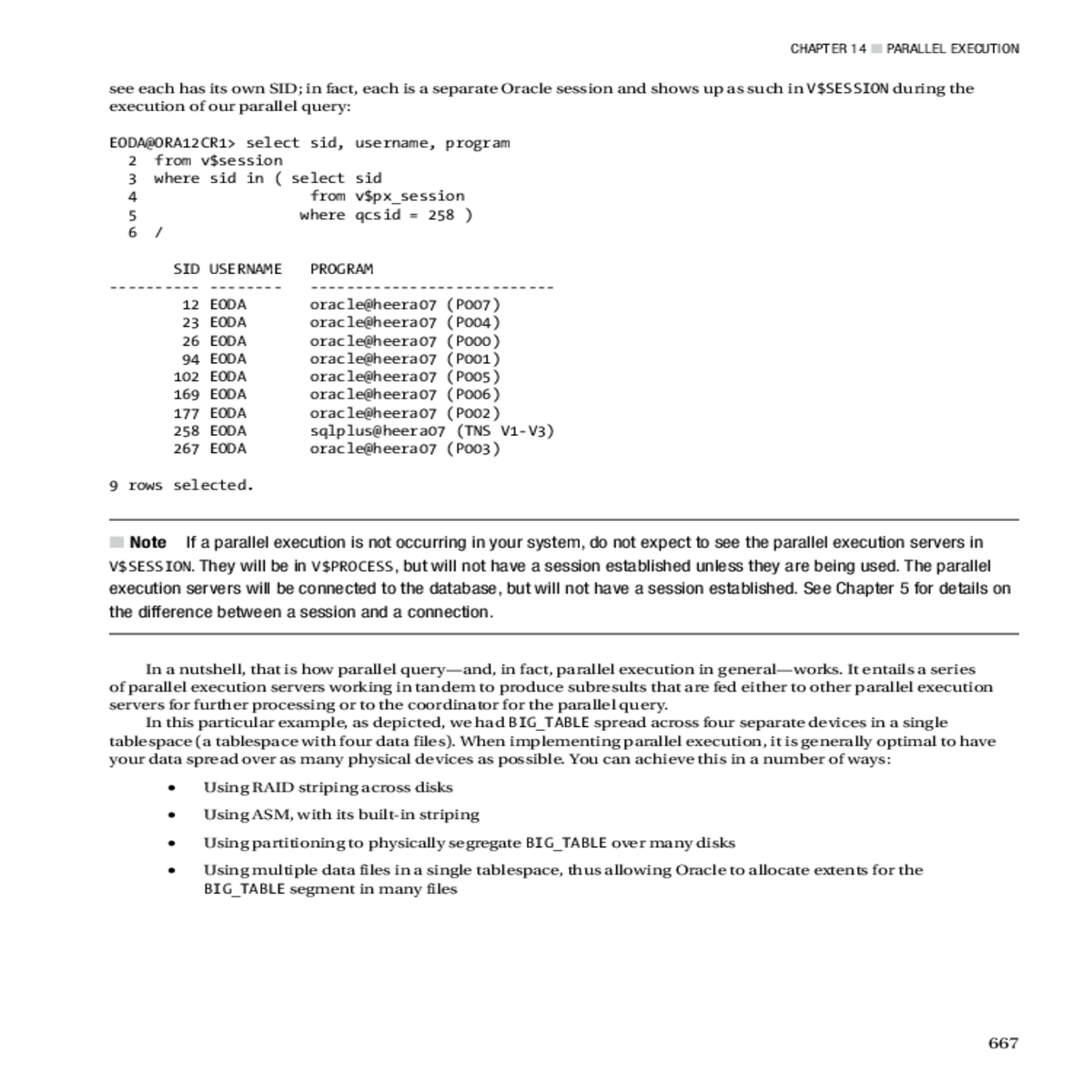The database will begin execute the queries the queue
Chapter 14 ■ parallel exeCution
see each has its own SID; in fact, each is a separate Oracle session and shows up as such in V$SESSION during the execution of our parallel query:
V$SESSION. they will be in V$PROCESS, but will not have a session established unless they are being used. the parallel
execution servers will be connected to the database, but will not have a session established. See Chapter 5 for details on
•� Using ASM, with its built-in striping
•� Using partitioning to physically segregate BIG_TABLE over many disks
Likewise, you can benefit from parallel query even on a single CPU machine. It is doubtful that a serial SELECT COUNT(*) would use 100 percent of the CPU on a single CPU machine—it would be spending part of its time performing (and waiting for) physical I/O to disk. Parallel query would allow you to fully utilize the resources (the CPU and I/O, in this case) on the machine, whatever those resources may be.
That final point brings us back to the earlier quote from Practical Oracle8i: Building Efficient Databases: parallel query is essentially nonscalable. If you allowed four sessions to simultaneously perform queries with two parallel execution servers on that single CPU machine, you would probably find their response times to be longer than if they just processed serially. The more processes clamoring for a scarce resource, the longer it will take to satisfy all requests.
This means that you might not have sufficient free resources at any given point in time to enable parallel query on these systems. This doesn’t mean parallel execute is not useful in this case—it just might be more of a DBA tool, as we’ll see in the section “Parallel DDL,” rather than a parallel query tool.
Parallel DML





